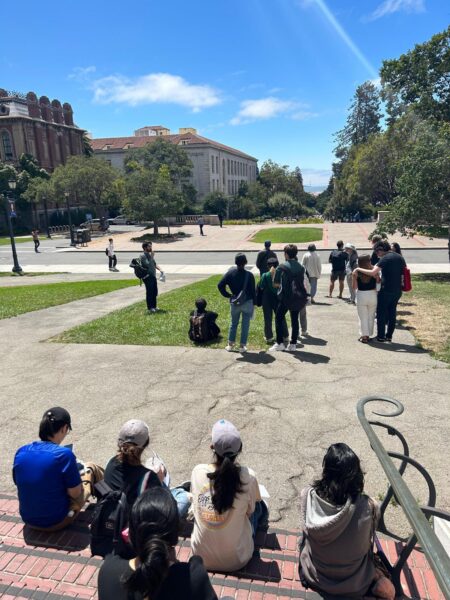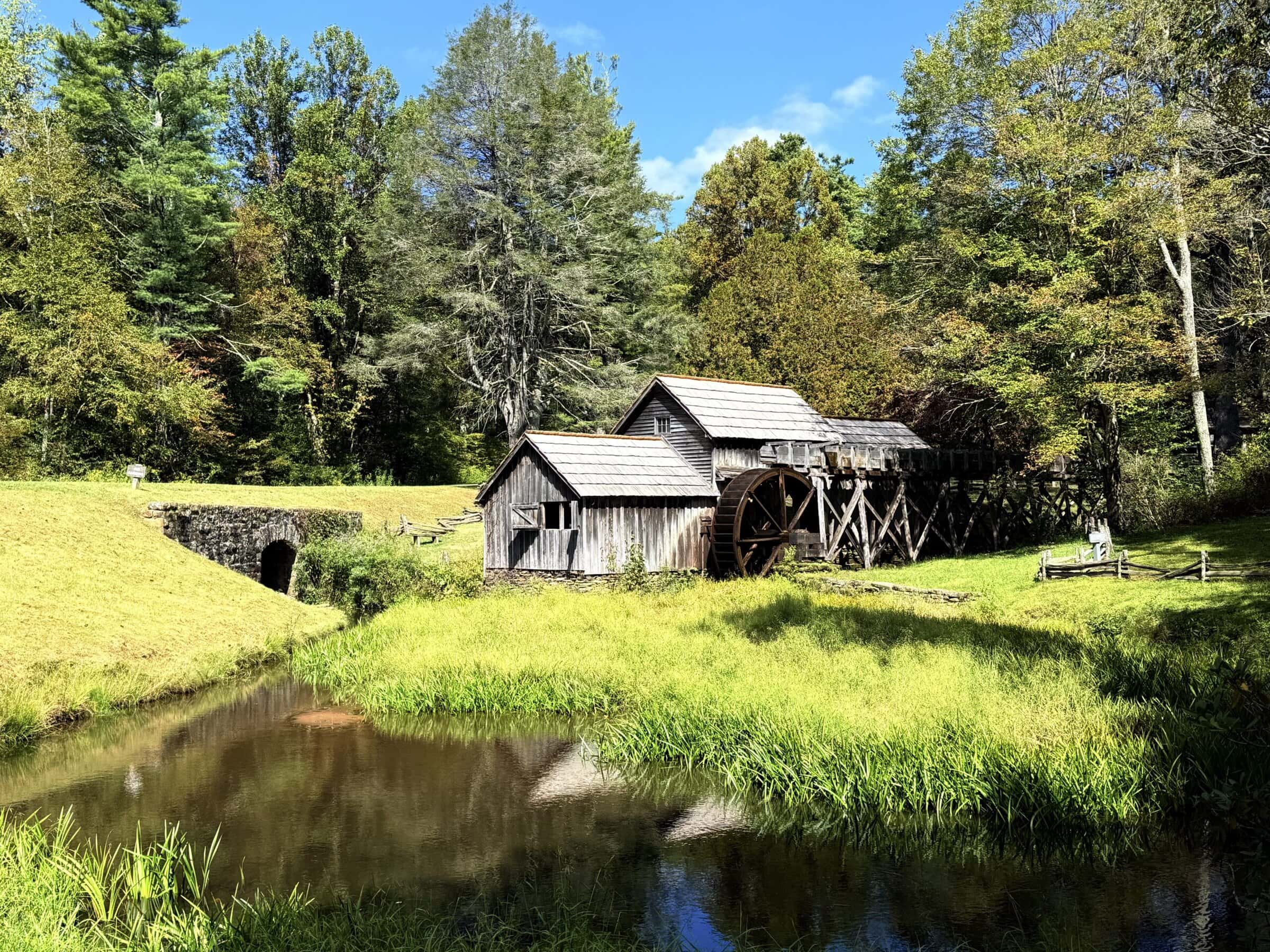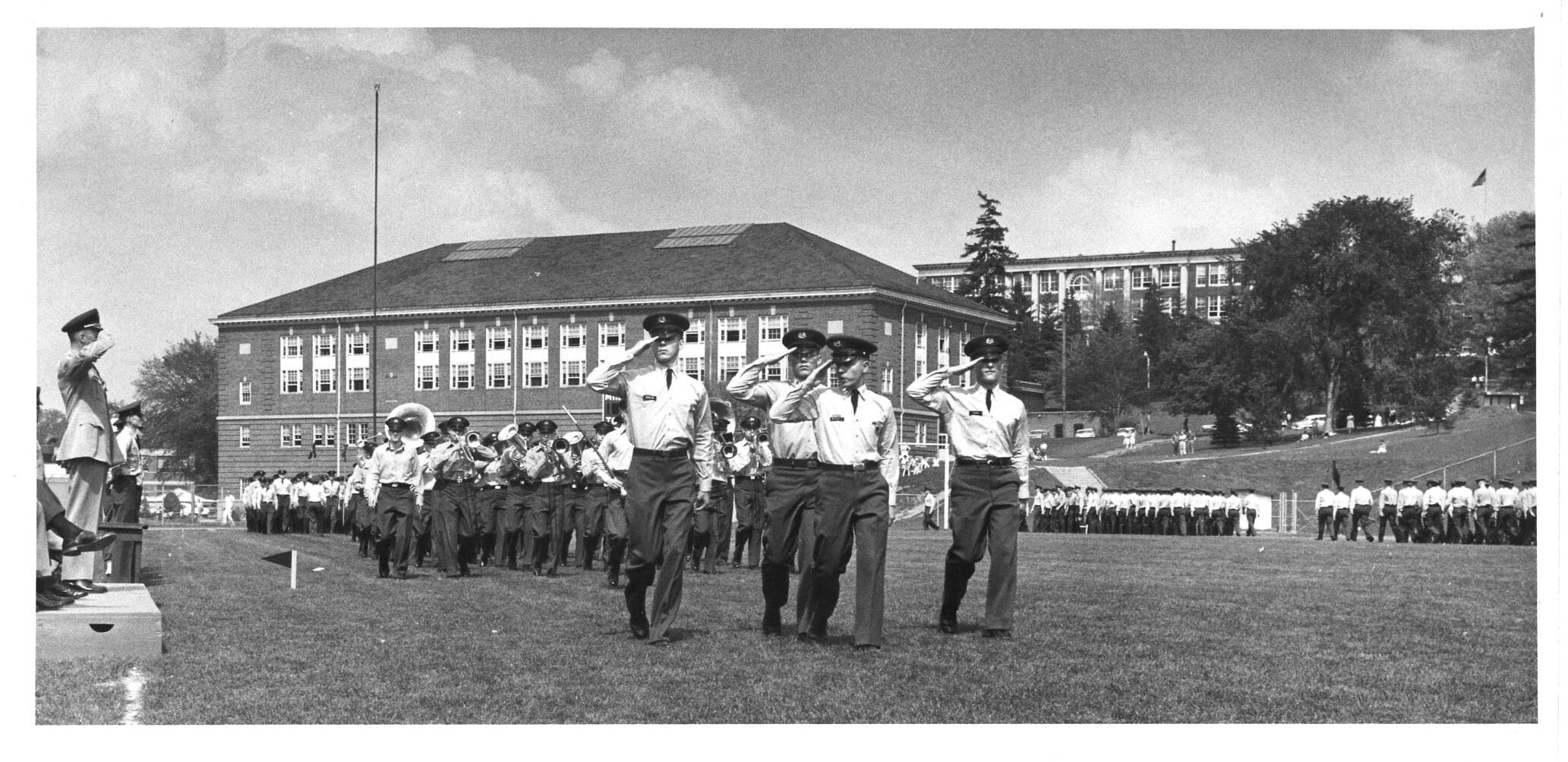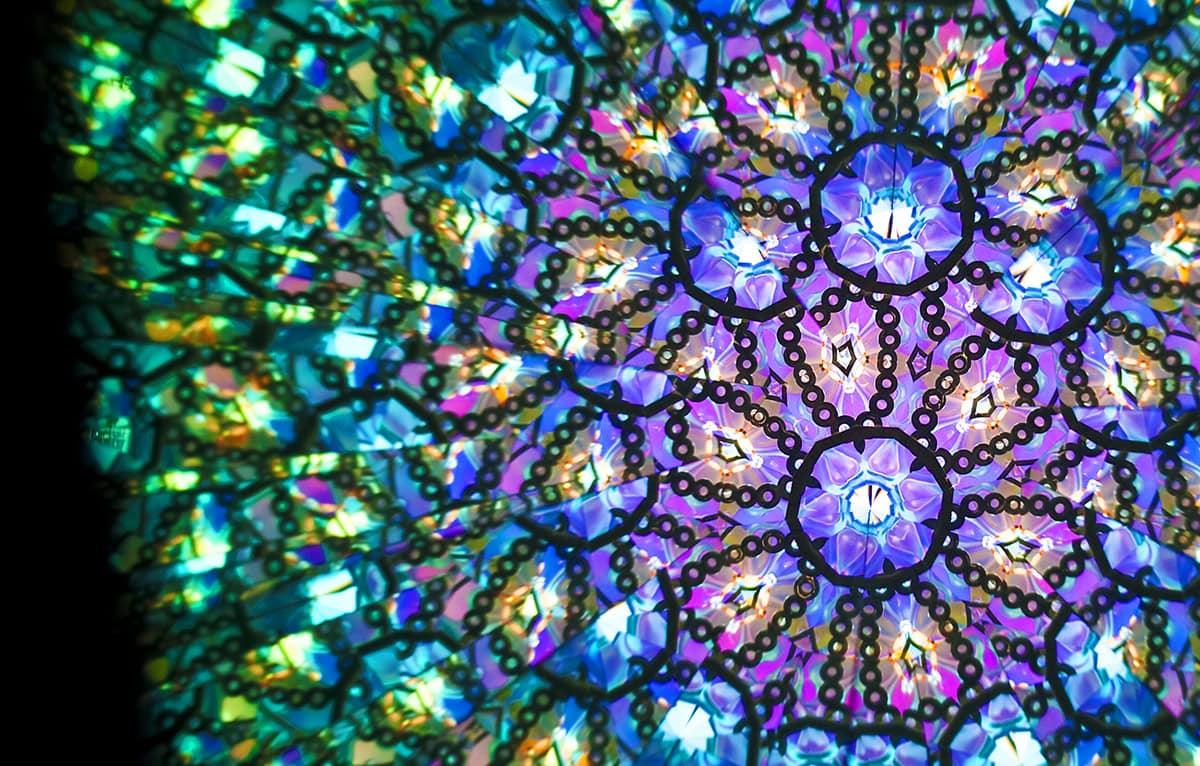At the University of California (UC), Berkeley, there is a glade studded with statues, plaques, and memorial benches—all the familiar memory-making devices of a university. A host of honored figures are remembered there, from football legend Pappy Waldorf to Gilded Age patron Phoebe Apperson Hearst. Nowhere is it noted that in 1925, construction workers on these grounds unearthed the remains of an elderly Indigenous man. The remains were removed to the Hearst Museum of Anthropology along with more than a dozen skeletons that had been found in the glade and along the banks of an adjacent creek. The density of remains suggests that the area was once a burial ground, a site of memory long effaced by the campus and its pantheon of patrons.

Infusing historical research into walking tours has helped Andrew Hardy and his fellow graduate students remake their campus into a public history site. Yvonne Lin
Lissett Bastidas, a history PhD candidate who studies California Indigenous peoples during the Spanish period, recently led a group to this spot to explain its unmarked history and the university’s current efforts to repatriate Indigenous remains. This was one stop on “Glimpses of Native American History at Cal,” a campus walking tour exploring the university’s fraught historical relations with Indigenous communities and current efforts to redress past harm.
Lissett’s tour is part of a larger project, designed and run by graduate students (including me), to create public walking tours of the university based on original historical research. The project grew from the history department’s career development program, initially funded by an AHA Career Diversity Implementation Grant. Many students in our department have strong interests in public history but few opportunities to develop them. The walking tours project enables us to use our own immediate environment to nurture these skills. With financial support from the department, around 10 of us began connecting with local historians and organizations to seek advice on crafting stories about our campus that nonacademics can find compelling.
We aim to reimagine the Berkeley campus as a public history site where all people, connected to the campus or not, can learn about the complex stories left out of the university’s typical celebratory narratives. To reach a wide audience, we have advertised at public libraries and historical societies and on social media. Using our training in critical analysis and storytelling, we hope to make these stories accessible while providing an alternative to the campus’s culture of commemoration.
A university is more than a site for thinking great thoughts.
One challenge is that much of a university’s past is typically classified as intellectual history, featuring important books and scientific breakthroughs by towering figures. To capture such a history, a walking tour might easily become a walking lecture with only tenuous connections to the spatial environment, or even risk recapitulating the hagiographic approach already inherent in campus memorialization. The university needs no help producing a hagiographic cartography of itself.
But a university is more than a site for thinking great thoughts. The UC, as one of the top public universities in the world, has served the public good as an engine of social mobility. Yet it is also one of California’s largest landlords and its third-largest employer, with an operating budget larger than 27 US states and an investment portfolio of $180 billion. It is a land grant university, a beneficiary of the Morrill Act of 1862, which granted federal public lands to state governments to fund higher education. A vast amount of Morrill Act scrip came from California, where lands plundered from Indigenous communities were sold to fund what one scholar termed “democracy’s colleges.” And UC Berkeley has famously been a major site of social protest. In short, it has had enormous power in shaping the social and physical environment of its surrounding community. Because this university sits at the nexus of public good, profit, and plunder, our project is history not only for the public but also of the public.
Our challenge is to use the built environment creatively to weave together and make visible these threads. Sometimes, we recover forgotten meanings. On my tour, “Beyond the Golden Gate: Asia Pacific and the Berkeley Campus,” we stop at an architectural axis designed by Frederick Law Olmsted in 1866 that aligns with the Golden Gate, offering a stunning view of the gateway to the Pacific. That axis, I explain, reflected the founders’ wish for the university to promote transpacific economic links between California and Asia, which led to UC Berkeley becoming in 1872 the first North American institution to fund a professorship in East Asian languages. The name Berkeley encapsulates these ambitions: It was selected because of a line from a 1726 poem by the philosopher George Berkeley—“Westward the course of empire takes its way”—that celebrated the expansion of Western civilization across the Atlantic to the Americas. By the 1840s, it had become a slogan of transcontinental expansion under Manifest Destiny. The UC’s founders, situated on California’s newly conquered Pacific coast, envisioned the ocean as a frontier for the extension of Manifest Destiny to Asia, and thus chose the name Berkeley for the new college town. Few today are aware of the name’s implications, and for many, the Golden Gate axis is simply a nice view. But the underlying imperial ideology was meant to be easily legible in the university’s early days. My task as the tour guide is to restore this legibility while applying a critical lens.
Other campus spaces have been the setting for events worth remembering that have left no mark. Another stop on my tour is Durant Hall, an administrative office building that once housed the Department of Oriental Languages (now East Asian Languages and Cultures). In 1970, graduate students occupied Durant as part of the national student strike against the Vietnam War. Using old photographs, news clippings, and oral histories taken from participants in these events (now respected scholars themselves), I describe this moment as part of a major transition in Asian studies.
Our tours also reveal hidden spatial logics that shape campus life. A forthcoming tour by Sarah Lee and Emma Bates will trace the history of campus policing, weaving together the university’s role in developing modern policing techniques and criminology with the formation of the campus police force (UCPD). One stop will focus on Sproul Plaza, the current UCPD headquarters, where a student’s arrest in 1964 sparked the Free Speech Movement. Sproul’s history as a locus of student protest is well known, making it one of the most highly policed zones on campus today. Less known is that third-party police contractors use the roof of the MLK Student Center, overlooking the plaza, to surveil protest activities today. Sarah and Emma will discuss how the campus acquired its own police force and how intersecting jurisdictional zones shape students’ interactions with law enforcement—a pressing concern given recent incursions onto university campuses across the country by immigration enforcement. And Alexandra Coakley will build on these stories in her tour on the history of campus protest, launching in the fall semester.
As employment opportunities in the professoriate have decreased, it has become urgent to imagine different ways of being a historian. The walking tours project has challenged us to adapt to different forms of storytelling. In an article or lecture, we can structure narratives as we wish, footnote, and use visual aids. But a walking tour is constrained by what is visible on a walkable route. One cannot linger too long on any stop, and the script cannot stray too far from things that one can point at.
On my tour, I wanted to discuss Edward Said’s Orientalism (1979), both as a grounding concept and as it relates to the 1960s and ’70s reckoning within Asian studies. But, as it turns out, few people want to listen to a literature review while standing in the midday sun. I had to rethink my usual practices. I decided to write my script while walking the tour route, tapping it out on my phone and reading it aloud. This earned me a few quizzical looks, but it was immensely productive. Besides keeping my script within bounds (my Said spiel was reduced to three sentences), this helped me think creatively about how I might integrate campus spaces into the narrative. Learning to adapt to unfamiliar modes of history writing ended up being a chief benefit of the project, since careers outside the academy could require us to apply our skills flexibly to new contexts.
Tour research led me into local archives and history centers to work with newspapers, maps, tax records, and oral histories.
I also have found myself acquiring skills that are basic for my colleagues who study North America. Because I am a scholar of early Chinese empires, my usual work involves 2,000-year-old administrative documents in an ancient language. But research for my tour led me into local archives and history centers, requiring me to work with newspapers, maps, tax records, and oral histories. Such training has been hugely beneficial to those of us who do not study America. The tours’ focus on the university makes it possible to bridge our specialized knowledge with stories of local significance, which can uncover unexpected ties between the American campus and distant times and places. Imagine, for example, a tour of Berkeley’s Beaux-Arts campus and Greco-Roman artifacts led by a student of the ancient Mediterranean, who can weave together classical studies and 19th-century neoclassicism in California.
This project began as an experiment, but it has made apparent the infinite potential for using the campus as a canvas for rigorously researched, critical, and engaging historical narratives. It has allowed us to make professional contacts with the wider local history community, who have helped with both tour design and promotion. Most importantly, the project highlights the university’s relevance as a multifaceted institution deeply interconnected with social and political life at local, national, and global levels. Our critical approach to university history reveals the power of this institution in its full complexity. Only with such a clear-eyed reckoning will the humanistic mission of the university be able to withstand the forces that wish to dismantle it, both within and beyond the ivory tower.
Andrew Hardy is a PhD candidate at the University of California, Berkeley.
This work is licensed under a Creative Commons Attribution-NonCommercial-NoDerivatives 4.0 International License. Attribution must provide author name, article title, Perspectives on History, date of publication, and a link to this page. This license applies only to the article, not to text or images used here by permission.


